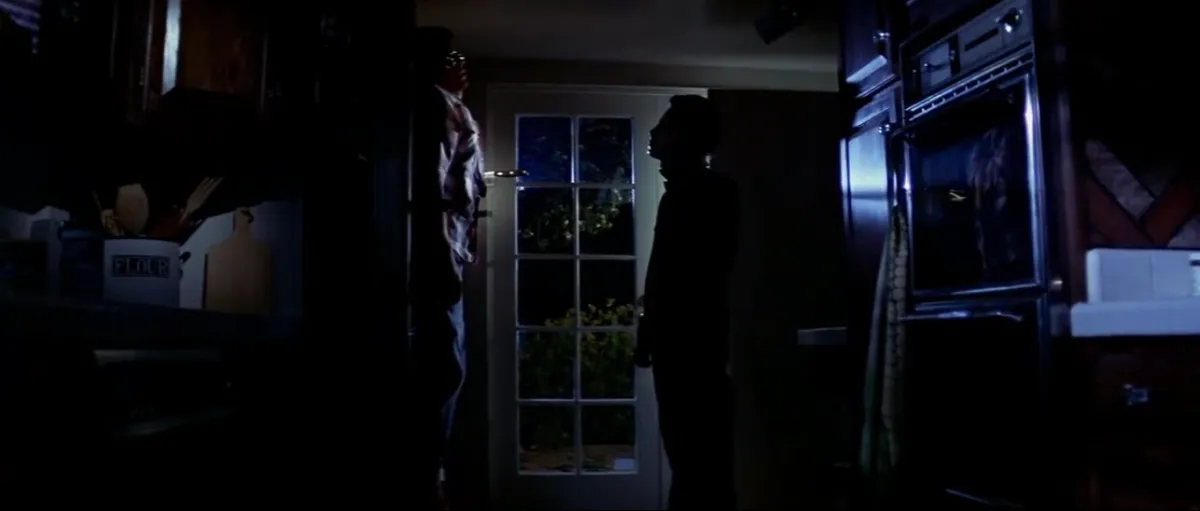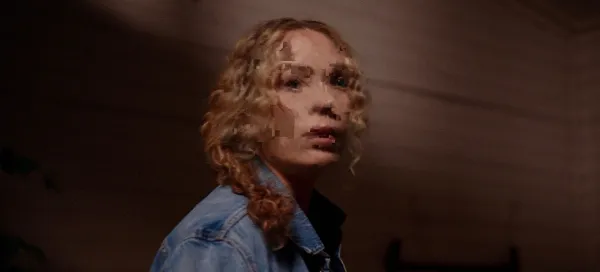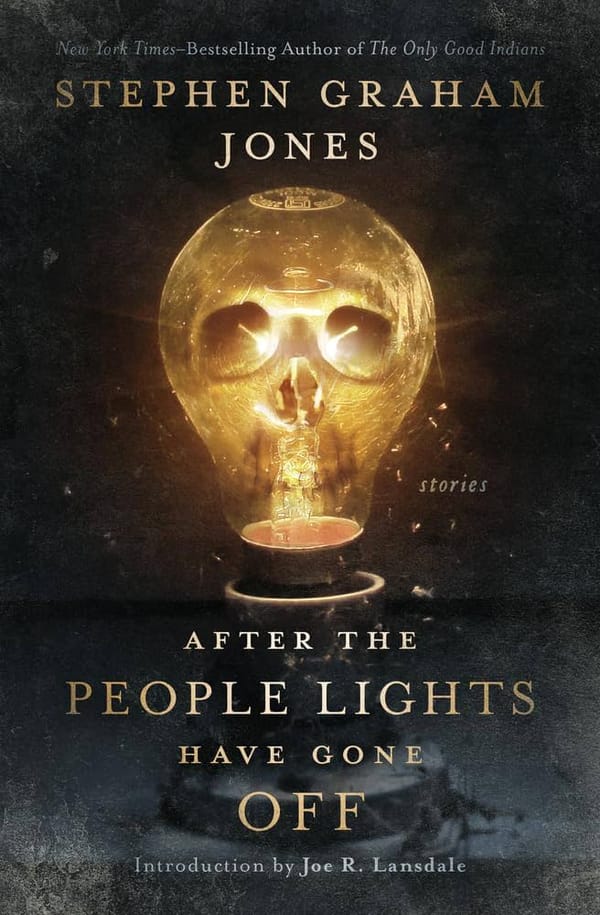Tracing The Shape 16: Michael vs. Bob

Something is happening to Michael Myers.
Ever since he found a new mask, and a new way to carry himself around Haddonfield, The Shape has taken on new power, but it's more than an external effect on the town around him. Something internal is happening as well, and it's exemplified by his second onscreen kill in 1978.
We don't get to know much about Bob, but we do know that he's athletically built, he cares about Lynda, and he seems like he can handle himself in most situations. He's the most physically formidable person Michael will encounter on this night, so his death deserves a little extra study, because it's an example of Michael's growing power, and the strange effect it has not just on Bob, but on Michael himself.
Michael's been watching Bob and Lynda very closely since the moment they entered the Wallace house, going as far as to stand a few feet away while they're making out on the couch. In the lead-up to Bob's death, as he and Lynda are locked in the throes of passion in bed, Michael does this again, passing his shadow over the bedroom. We know because of the jack-o'-lantern on the nightstand (did Michael put that there?) that this is the same room where he'll later stage all three bodies for Laurie to find, and we also know that Annie's body is already somewhere in the Wallace house. It feels like Bob and Lynda have intruded on something, and now here they are, doing the very thing that set off Michael's first murder.
But we've already talked about Michael's connection to sexuality, the way it calls up the rush he felt when he killed Judith back in 1963, and we'll probably talk about it even more somewhere down the line. For now I want to focus on something I find fascinating as someone who's lived with this movie for decades, and that's the way Michael chooses to kill people.
With Annie, he had the element of surprise and it still felt like a struggle. He couldn't quite pin her down from the backseat of that car, and you got the feeling that he'd planned to strangle her and then cut her throat instead just because she wouldn't stop fighting him, bucking at his grip, determined to survive. It felt like frustration from Michael, almost annoyance. How dare this girl make it hard on him?
Now you have Bob, and if anyone in this movie seems like he could make it hard on Michael, it's this guy. To combat this, Michael does the simplest thing possible and hides behind a door, leaving the French doors in the Wallace kitchen open just enough to draw Bob's attention, then springing his trap when Bob thinks one of his friends is trying to scare him. There's something so delicious about that, the idea that Bob is certain his girlfriend or one of her friends is just messing with him. It's that final little drip of carefree energy that's all about to go away.
Because Bob is so locked into the idea that he's just rooting out a Halloween prankster, Michael gets the jump on him, and you can see in Bob's eyes not fear exactly, but complete shock. There is, for this young man, absolutely no context for what he's seeing. Imagine Bob's point-of-view: It's not someone you know, or even someone you could know. It's a blank white face, heavy breathing, and the shock of a hand around your throat.
And then you're lifted up.
Michael has certainly demonstrated a degree of strength already. He got his sister's gravestone out of the ground, and shattered a car window with one swing of his hand. He's not weak by any stretch, but his ability to lift Bob off the ground with just one arm is extraordinary, particularly given his lean frame and all those years he spent locked away. Michael has not trained for this, or even practiced this, but somehow he can still do it, imbued with his own particular brand of slasher adrenaline that allows him to handle Bob like a toy. He almost doesn't need the knife, but even that defies the laws of physics a bit. Pinning a 180-pound (at least) man to a flimsy folding door with nothing but a single kitchen knife isn't really something you can do, at least not for long. Gravity takes over at some point.
But there Bob hangs, a butterfly on a velvet matte, pin through its thorax. The kill is shockingly clean, the death quick despite the location of the knife. Bob relaxes into his fate with no choice in the matter, and when Michael lets him go he's simply frozen in time, suspended, what made him lovable, good-natured Bob already gone. I use the butterfly analogy because it's the same one Carpenter's used in discussions of the scene, and the direction he gave to Michael Myers actor Nick Castle to admire his work like he was studying a butterfly pinned inside a frame.
Michael's famous head tilt, back and forth while admiring Bob's corpse, is both an amusing bit of dark humor and a genuine insight into what's going through Michael's head in this moment. You get the sense, as his head tilts, as he stares at what he just mounted on the wall, that he wasn't necessarily sure he was capable of this. After all, as far as we know he's never tried it before. Did he plan to try it? Or did he just lift and Bob rose and Michael did what came naturally with the knife?
Michael's transformation into Haddonfield's Boogeyman may have started when he encountered Tommy Doyle's bullies outside of school, but it didn't end there. He is still changing, still becoming something else, and I think that in this moment even he is surprised by what he's capable of inflicting on others. He's growing more monstrous by the minute, and not just in terms of physical strength. Because as we'll see in a matter of moments, Michael's also developed a sense of the theatrical, and he's about to unleash it on Lynda.
Next Time: Bob the Ghost!



